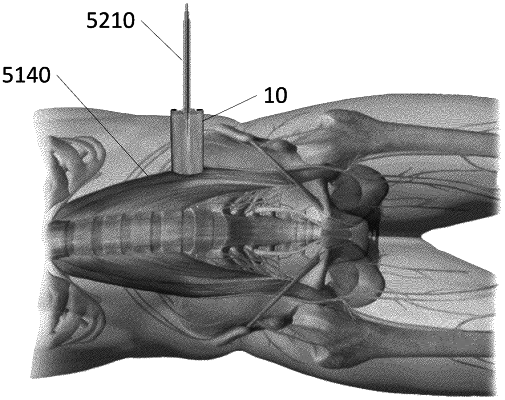| CPC A61B 8/085 (2013.01) [A61B 8/12 (2013.01); A61B 8/4494 (2013.01); A61B 8/5223 (2013.01); A61B 17/00234 (2013.01)] | 16 Claims |

|
11. A method comprising:
advancing a device capable of detecting anatomical structures and comprising a proximal end, a distal end, an elongated body extending between the proximal end and the distal end, and at least one ultrasound transducer positioned at the distal end into a patient such that the distal end is positioned on a surface of a patient's anatomy without penetrating the patient's anatomy, wherein the patient's anatomy is located between the device and a surgical site;
scanning the patient's anatomy to generate a b-mode image of the patient's anatomy, wherein the scanning is performed with the device positioned on the patient's anatomy and without penetrating the patient's anatomy;
identifying image texture and echogenicity information from a digital representation of anatomical structures in the b-mode image;
identifying at least one voltage trace associated with an anatomical tissue from at least one scan line from the digital representation of anatomical structures in the b-mode image;
comparing the at least one voltage trace to a predetermined voltage trace of a muscle;
determining a presence or an absence of a spectral signature of the muscle in the at least one voltage trace based on the comparison;
determining, based on the presence of the spectral signature, the anatomical tissue to be the muscle;
based on a determination that a path between the distal end of the device and the surgical site does not pass through anatomy other than muscle, determining, without penetrating the patient's anatomy, that the path comprises a trajectory between the distal end and the surgical site; and
outputting an indication of the trajectory.
|